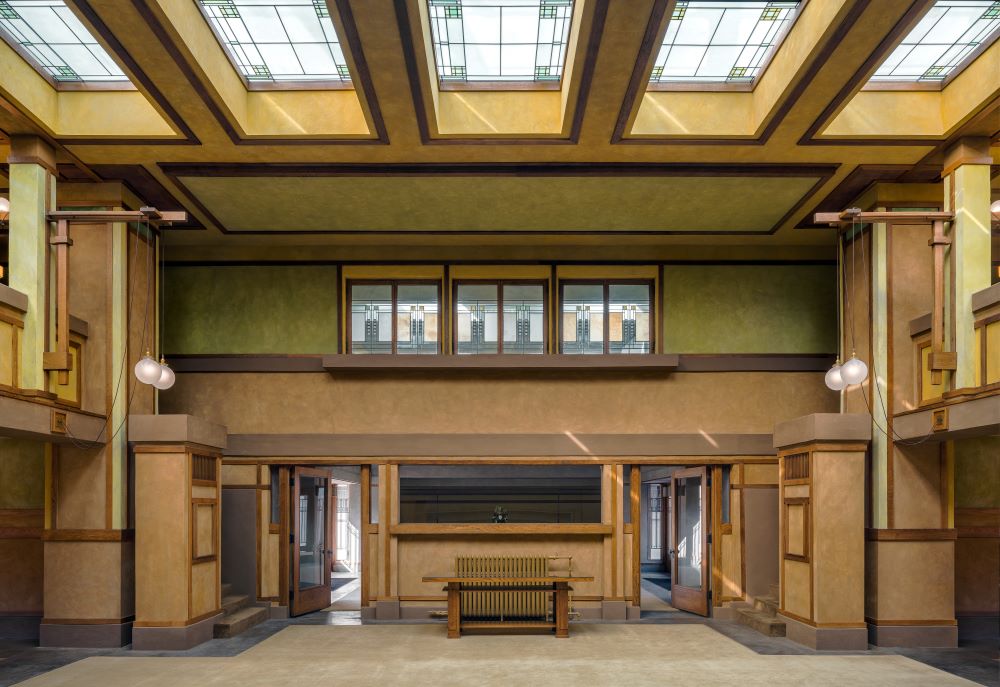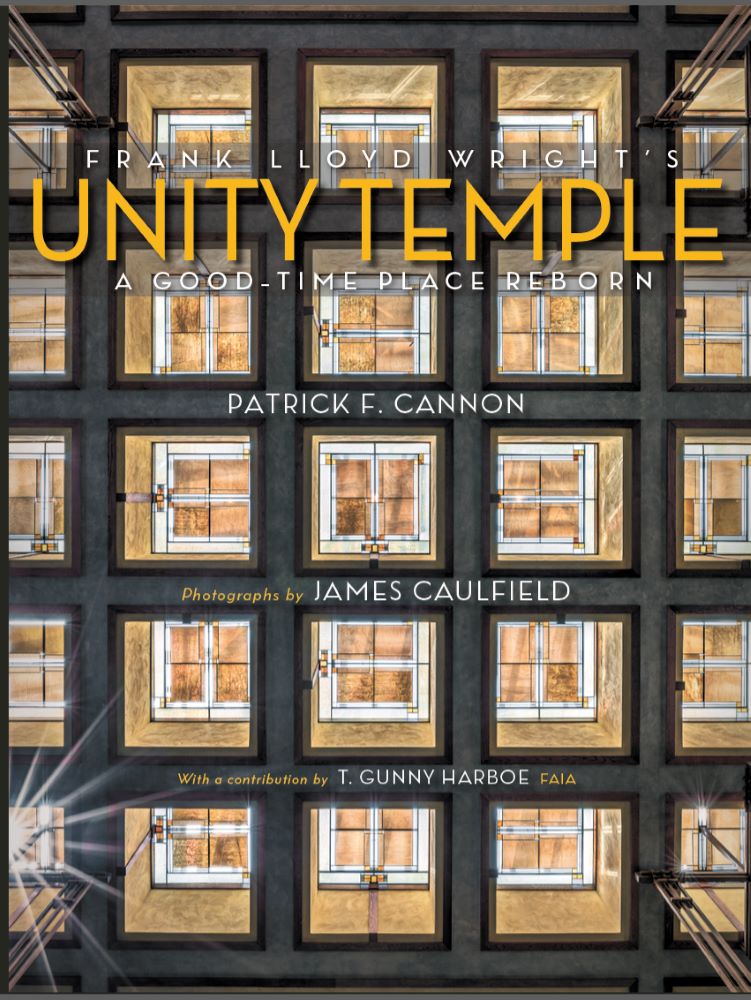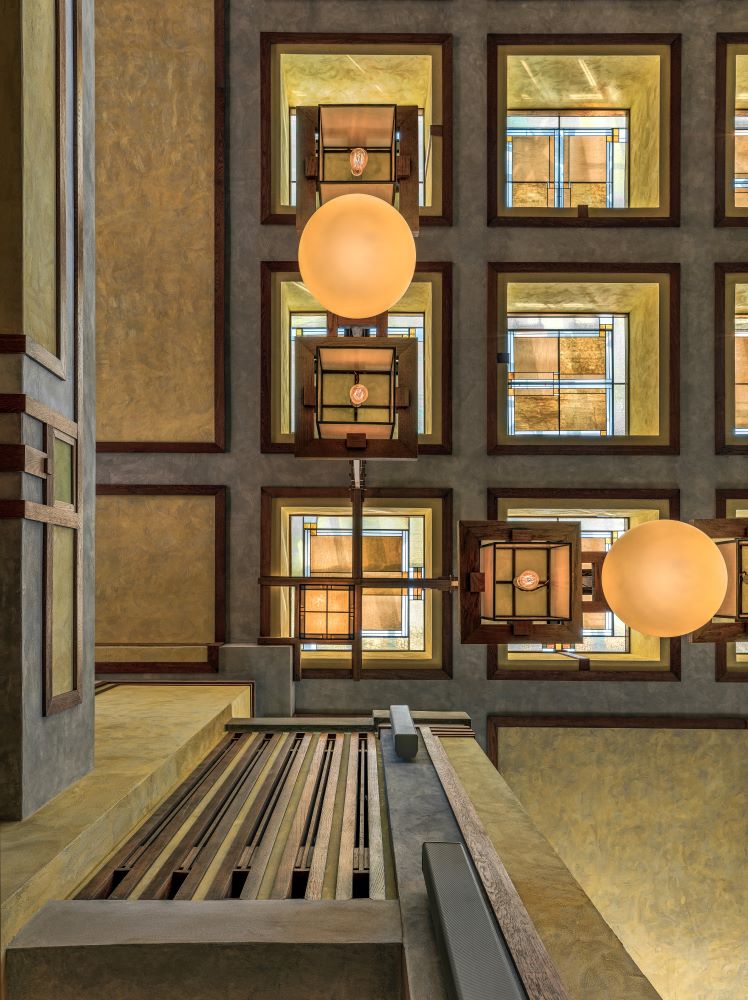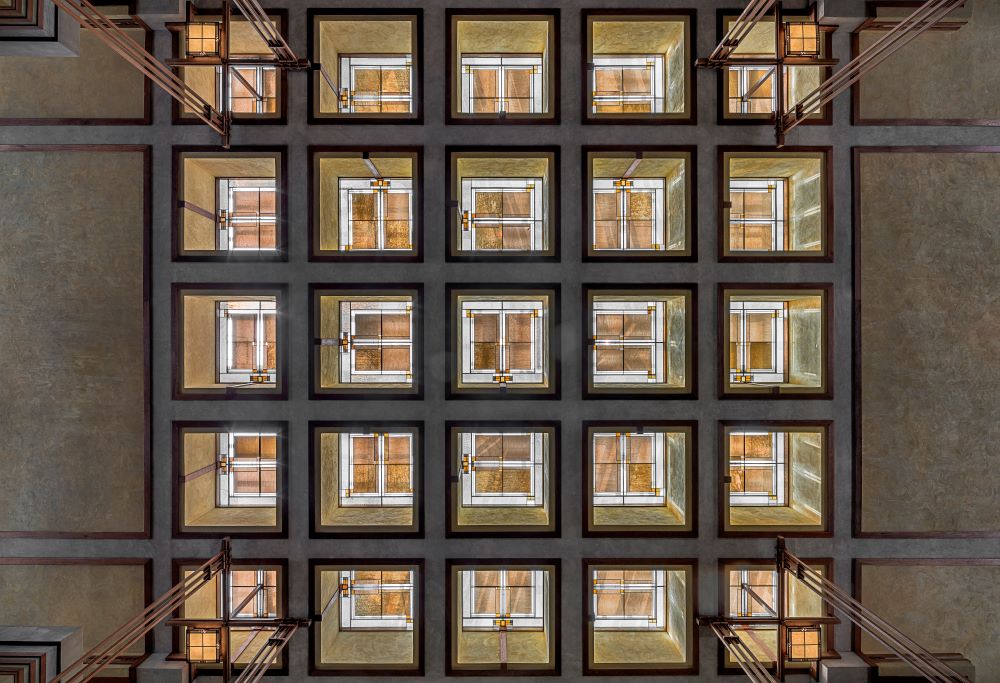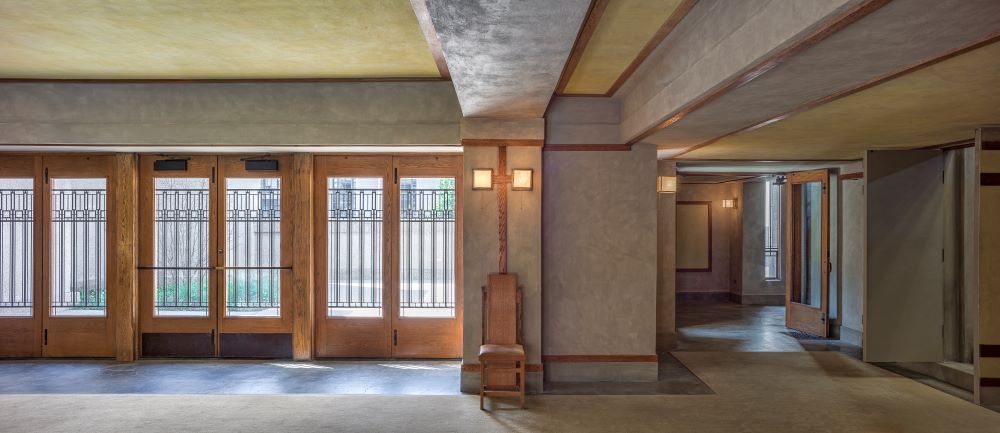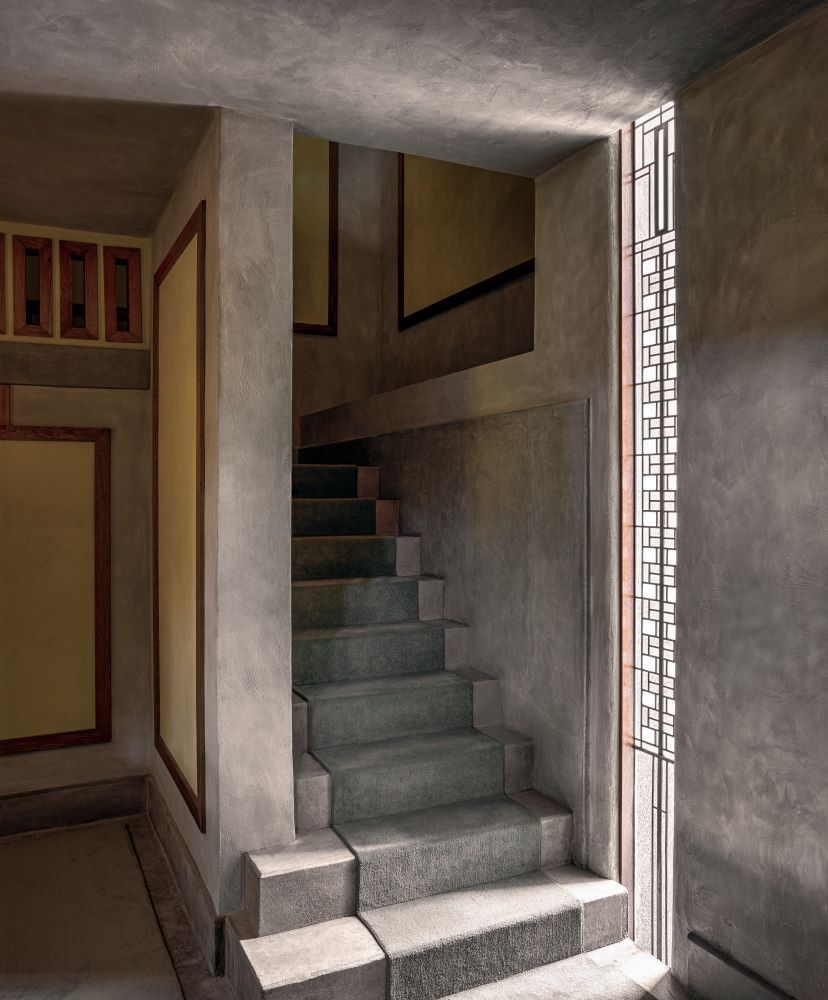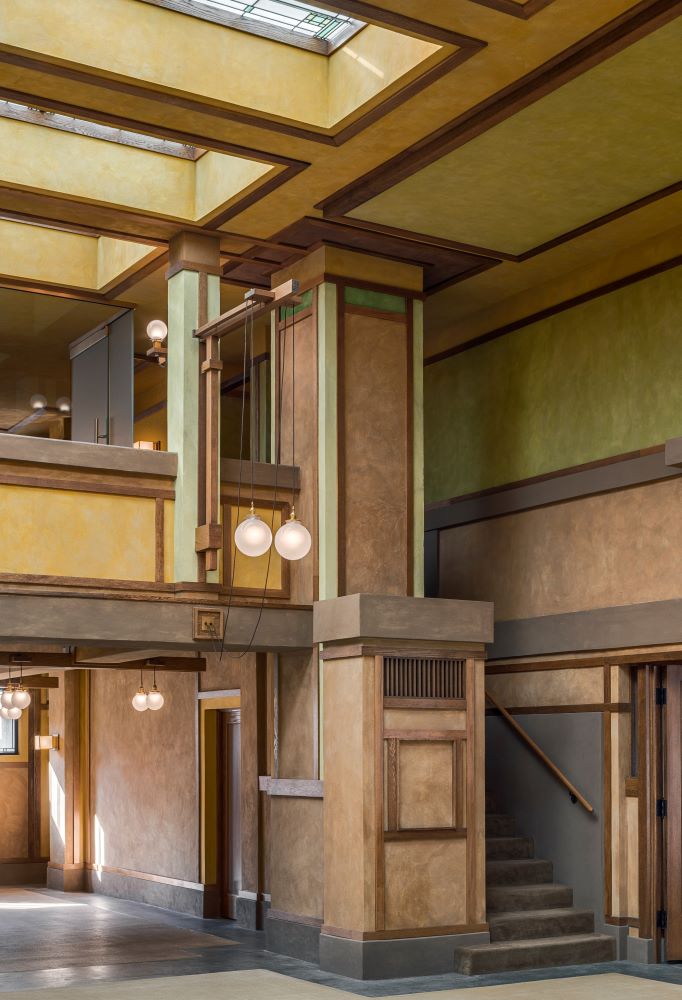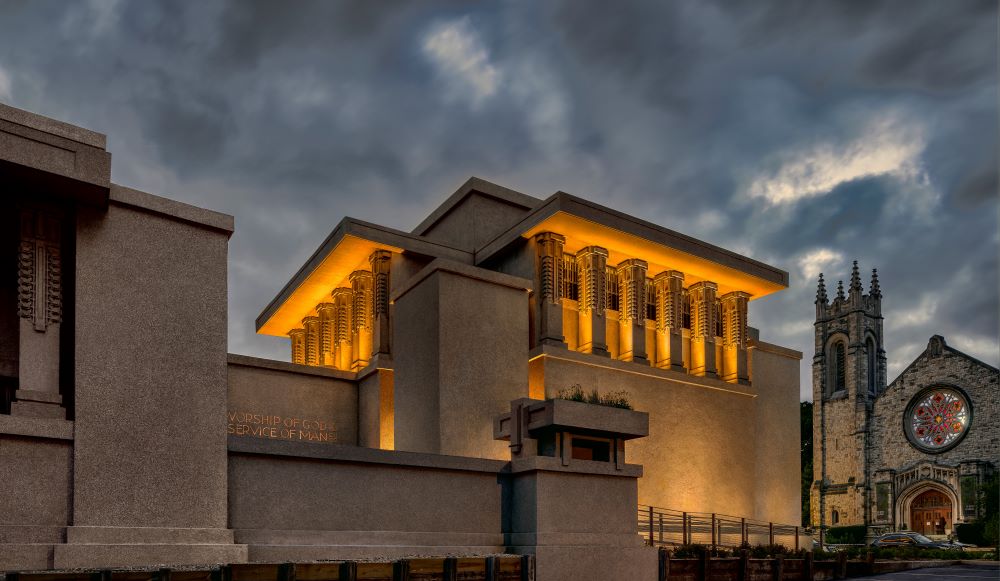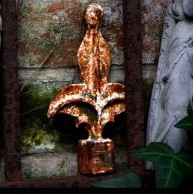Why not, then, build a temple, not to God . . . but build a temple to man, appropriate to his uses as a meeting-place, in which to study man himself for his God’s sake? A modern meeting-house and a good-time place.
– Frank Lloyd Wright
A new book on Frank Lloyd Wright’s Unity Temple in Chicago is actually a reprise.
Back in 2009, photographer James Caulfield and writer Patrick Cannon collaborated on a book of words and photos of one of Wright’s best buildings.
That was before architect Gunny Harboe’s $25 million restoration of the project, completed in 2017.
Now Caulfield and Cannon have revised that 2009 effort, adding a chapter on the restoration by Harboe himself.
They worked in conjunction with the Unity Temple Restoration Foundation, and found funding in the form of a generous grant from the Richard H. Driehaus Foundation of Chicago.
“I wanted to do the building completely, with a photographic survey since its restoration,” Cannon says. “I wanted to tell the story of how it came to be.”
His primary goal was to make clear that this building is indeed an architectural triumph. “When you look at the totality of Wright’s work, it’s in the top 10,” he says. “It’s the culmination of what he did in the first 20 years of his practice.”
Completed in 1908, just a few years after Wright’s 2004 Larkin Building in Buffalo, N.Y., Unity Temple offered the architect the opportunity to do something new for suburban Oak Park – and he rose to the challenge. “It may have cost twice as much as the budget, but in the end the client didn’t regret it,” he says. “They understood it was a masterpiece.”
At a book signing in the temple, architectural historian Rolf Achilles told Caulfield that the book contains the best photography of the building. Then he waxed poetic about the temple’s design. “He went on about how it’s Brutalist and Cubist, and predated Braque and Picasso,” Caulfield says. “Wright got there first.”
Cannon’s been a tour guide at Unity Temple and at other Wright-designed Chicago buildings for years. But this one is truly inspirational, he says. “I’ve been in it as many times as the congregation,” he says. “I’ve watched people walk up to the auditorium like it was a religious experience – and seen tears in their faces.”
It’s built on a plan of nine feet, eleven inches, Cannon says. “There’s all this geometry behind Wright’s architecture – and this is an exercise in geometry and math as much as it is in architecture,” he says. “The experience you get is that it’s his greatest architecture.”
In July 2019, the building was named one of eight Wright buildings as a UNESCO World Heritage Site. Others include Robie House, Taliesin, Hollyhock House, Fallingwater, Jacobs I House, Taliesin West, and the Guggenheim Museum.
And the book? It not only tells the story of Unity Temple’s design, creation and restoration, it’s also won the Gold Medal for Architecture by the Independent Publishers Book Awards.
For more, go here.



